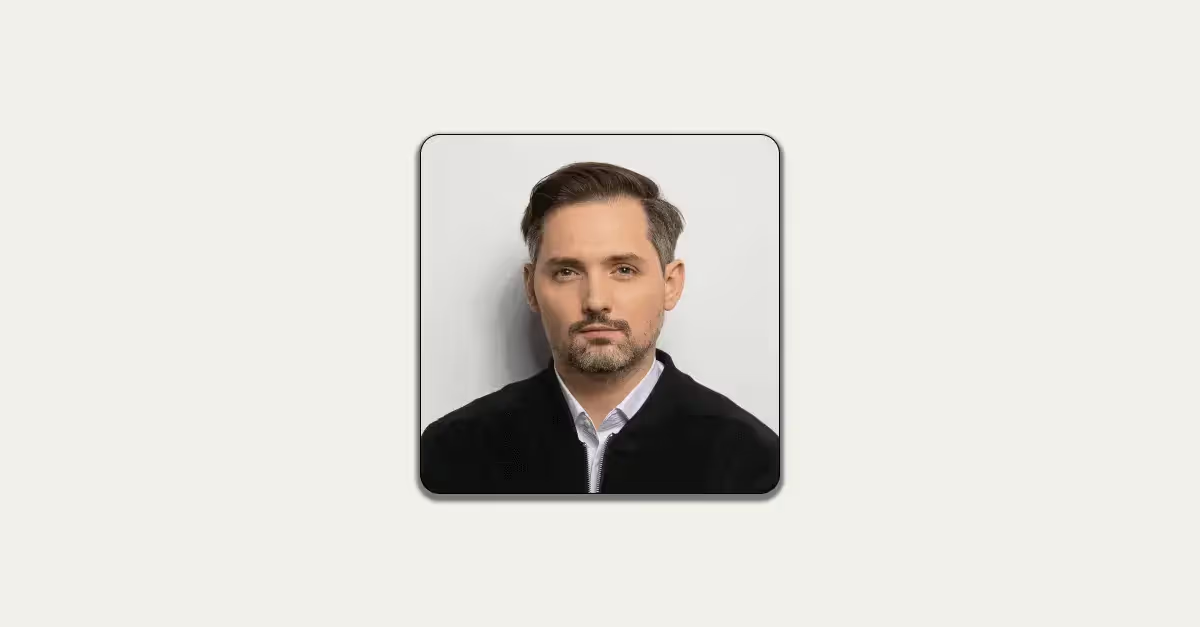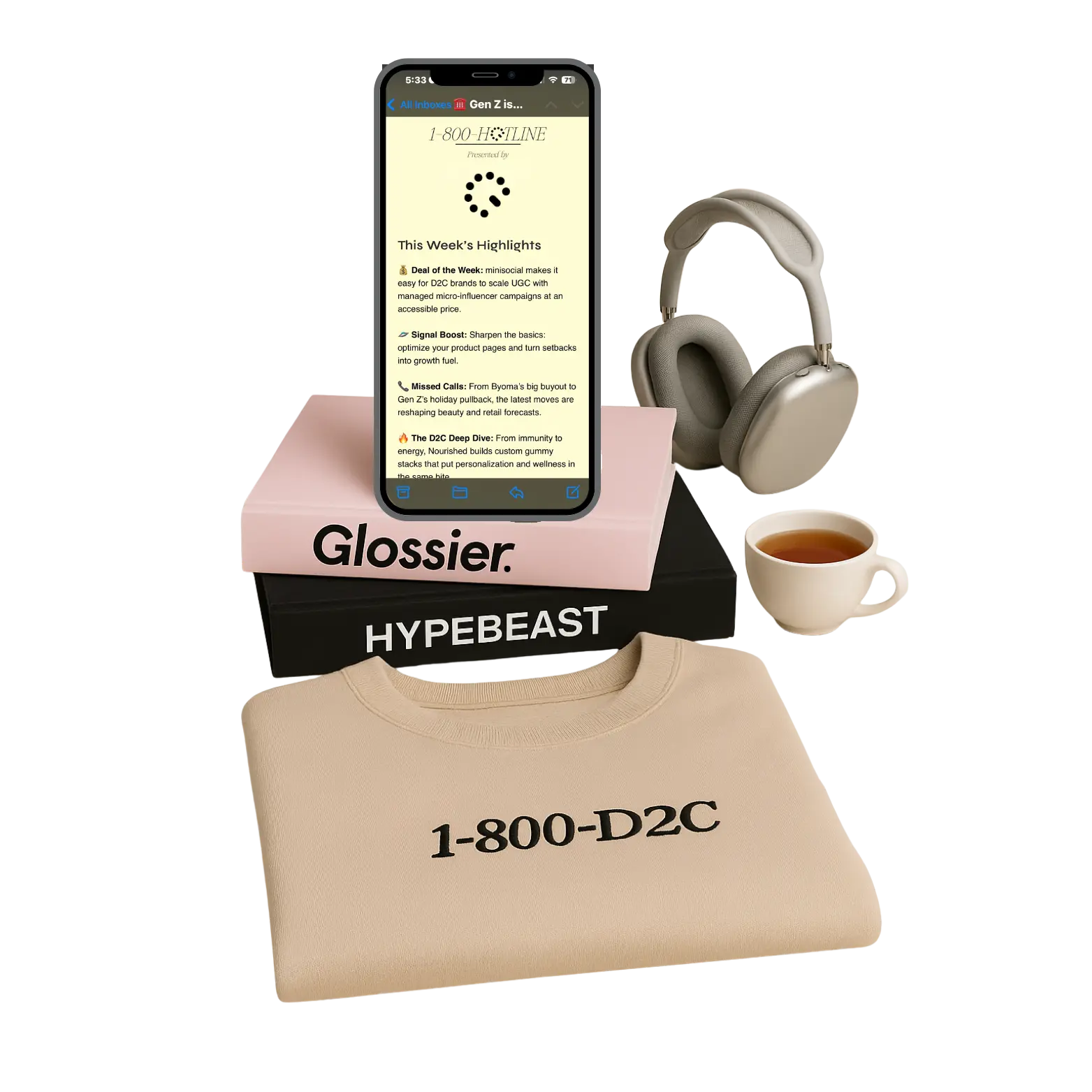
That is what we pitched to investors (laughs). And if you listen to our first interviews, that’s where we said we wanted to be in 5 years. But when things move bit by bit, you often don’t realise how much progress you’re making - so to me, it doesn’t feel like a massive leap from 0 to $100.
There are 3 founders: My brother Martin is the one who saw an opportunity in the market. He comes from a strong business background (INSEAD MBA & consulting). Our second founder, Cristoph Hermann, comes from a product design background - he’s the mastermind of waterdrop. He used to work for a product design studio in London and his experience was critical for waterdrop. And then you have me. I have a diverse background, with a mix of business education and marketing.
What connects us all is that nobody originally came from the beverage industry. That was an advantage however, as it allowed us to bring a new take on how things were done.
But we did surround ourselves with top of the range experts. For instance, one of our first investors is a leading producer in natural fruit plant extracts & aromas. He’s the partner we developed the product with.
In 2017, our first product wasn't good at all. We were claiming 700 different things and we lacked focus. But as they say:
“If you're not embarrassed by the first product you launched, you launched too late.”
So we launched D2C first and expected the sales to roll in. But nothing happened. Eventually, we cracked Facebook / Instagram ads, and at the time - it was easier to generate ROAS on those channels, so we were able to scale very rapidly through those.
Alongside those efforts, we expanded omni-channel with pop-up stores.

Our first year (2017) we did 700k euros. The next year (2017) we did 5 million. And then we scaled to 20 million in 2018 and surpassed 40 million in 2019. Then, in 2020, we did 80 million and have scaled past 100 million since then.
Going from 40 to 80 million was intense. That was through the introduction of retail and wholesale, our B2B channel, and international expansion.
I wouldn't always say that it’s necessarily healthy for a company to double in size in just 1 year. It’s very tough to maintain consistency in brand and culture at that pace.

We actually always entered new markets by going D2C first because it gave us a way to understand the local consumer in the given markets. What is the best messaging? The best product?
It’s also a way to gain brand awareness, build credibility, and most importantly, offer leverage for when it’s time to talk with retailers.
Our overall message is that we inspire and help people to drink more water. And we do that with our microdrinks, the hydration cubes that dissolve in water and give water great taste, but also give it functionality.
But at the beginning, nobody understood what we offered. Some even thought our product was a soap. So we had a eureka messaging moment when we introduced our glass bottles and combined the bottle + the microdrinks into a set.
That enabled us to show our product in the ads with the drop dissolving inside the branded bottle. So right then - people finally understood how waterdrop worked. That set became our best seller and remains as so, to this day.
We’ve always had a strong focus on building communities. So we’ve invested in that since day 1 and have since gathered over 100,000 people in Facebook groups, just talking about hydration (not necessarily even about waterdrop directly).
And then beyond the obvious efforts to drive subscription - we drive retention through our hydration tracking app on iOS / Android. The app is connected to our entire loyalty program via Loyalty Lion which is really cool. Our customers can redeem points by drinking more water.
The coolest part is that our app is linked to hardware products within our bottles which automatically track your hydration progress. The concept is all-around very innovative and we’ve found it effective in driving retention.

The biggest win was building our own production site over time.
All of the waterdrop production is in-house. So we're independent from everything that may hit us. This was very handy in the last two years, as you can imagine. That’s also one of the aspects that convinced larger retail partners (especially in the US) to work with us.
On the fulfilment side, we did the same thing. We built our own fulfilment center as a joint venture, which allows us to control & test processes and delight customers. We implement our ever-changing blueprint in all other fulfilment locations worldwide.
Our e-commerce is run on Shopify Plus, which perfectly handles even the largest visitor peaks. Our ERP is powered by Oracle NetSuite. Beyond that, all custom projects are built on a highly scalable and heavily automated micro-services architecture on the Google Cloud platform. And our analytics are done in-house with our own data engineers.
A large part of the credit goes to the teams that have been working relentlessly alongside us over the last couple of years. A venture like this only works if there's a crowd of people that are really committed to a cause.
The second is also something you can’t always influence: Timing. We were in the right spot at the right time. If we had launched waterdrop 3-4 years later, I think it would've been very hard for us to scale via D2C as much as we did.
Discover new D2C brands, new eCommerce tools and read in-depth founder reviews each week.
